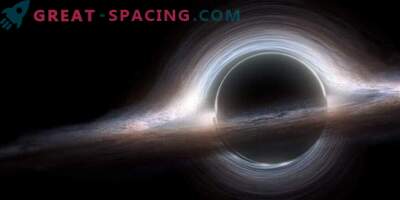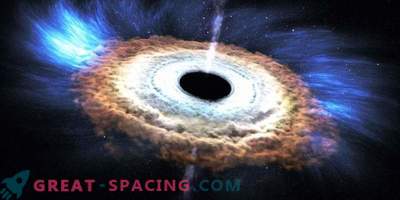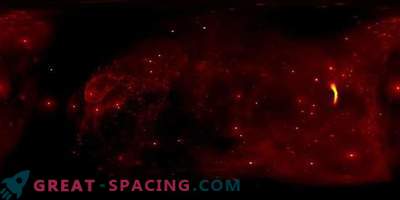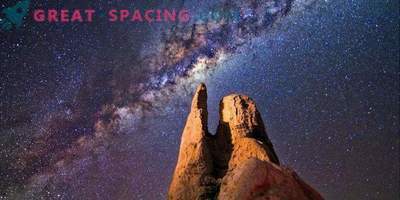
Scientists reveal a new map of a high magnetic field in gas and dust, rotating around a supermassive black hole in the galactic center. Black holes are objects with gravitational fields. They are so powerful that they even manage to absorb light. It seems that in the center of almost every galaxy there is a black hole. And the Milky Way is no exception. The stars revolve around it at a speed of 30 million km / h, which means its massiveness is a million times more solar.
Visible light from sources in the galactic center is blocked by dust and gas clouds. But IR light, radio waves and X-rays can break through the flap, so scientists use this method to better see the area. CanariCam combines an infrared image with a polarization device that filters light with specific characteristics based on magnetic fields.
The new map covers a plot of approximately 1 light year on each side of a supermassive black hole. Here you can see the intensity of IR light and the magnetic field lines in the threads of warm dust grains and hot gas.

The color scheme in the picture shows the amount of IR (thermal) radiation coming from thermal dust particles in the filaments and luminous stars during the light year of the galactic center. The location of the black hole is marked with an asterisk. The lines trace the directions of the magnetic field and capture the complex contacts between the stars and dust filaments, as well as the influence they have with the gravitational force Threads with a length of several light years are located close to a black hole (below the center on the map) and may indicate where the orbits of gas and dust flows converge. Despite the powerful winds released by the stars, the filaments remain in place, connected by an internal magnetic field. Elsewhere, the magnetic field is not so clearly aligned with the filaments. Depending on how the material flows, part of it may be absorbed by a black hole.
New reviews offer more detailed information about the relationship between bright stars and dusty filaments. There is little information about the origin of the magnetic field in this area, but it is likely that the smaller one stretches when the filaments are drawn due to the gravitational influence of the black hole and stars in the galactic center.
Tools like CanariCam help get enhanced results. Now you can watch the race of matter around the black hole at a distance of 25,000 light years and consider the details of the magnetic field. Scientists hope to explore the field on a large scale, and to understand the relationship with dust and gas clouds.











































